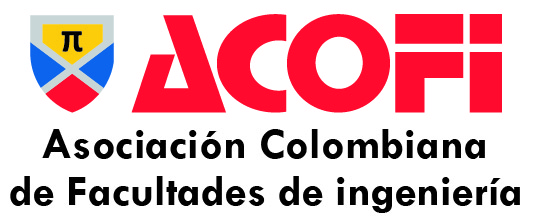Evaluation of a Direct Methanol Fuel Cell, DMFC, using ethanol to determine the flexibility of the cell and the efficient use of energy resources – Phase I
DOI:
https://doi.org/10.26507/rei.v3n6.59Keywords:
fuel cell, methanol, ethanol, Spillover effectAbstract
The objective of this work was aimed at assessing the impact or damage that may suffer a fuel cell DMFC (Direct Methanol Fuel Cell) to use ethanol as a fuel substance. Then, it found the flexible use of the DMFC research and promotes the efficient use of energy resources Colombians, Bioethanol. For the foregoing, it is a study on methanol fuel cell – DMFC, supplied by a vendor, under the conditions of operation suggested, was later tested with ethanol in the following sequence: (1) Compare to the characteristic curves of the DMFC using methanol and ethanol and (2) Operate of the DMFC using methanol, taking into account the effect of cooperative promotion (Spillover) that promotes the oxidation of CO adsorbed on the Pt because of the reaction of ethanol in the DMFC. For comparison of the two substances it was used to a factorial experimental design, pre-definition of a benchmark: molecular approach. The results, curves show a similarity in the behaviour of ethanol vs. methanol, both for the electrochemical curve, as the curves for power and voltage vs. current density, indicating that during the time of trial, ethanol, in addition to generating electricity in comparison to methanol, does not appear to affect the catalyst, the membrane and other devices in the DMFC, perhaps by the spillover effect, however, it becomes necessary to study the phenomenon of depletion of the DMFC by the continued use of ethanol as the reaction of electrooxidation of ethanol may be incomplete as it will, in time, its exhaustion.Downloads
References
Aricó, A. S.; Antonucci, P. L.; Modica, E.; Baglio, V.; Kim, H.; Antonucci, V.; Electrochemim (2002). Acta 47-3723.
Camara, G. A.; Giz, M. J.; Paganini, V. A.; Ticinelli, E. A.(2002). Electroanal. Chem. 537.21.
Cano C., Ulices (1999). Las celdas de combustible: verdades sobre ageneración de electricidad limpia y eficiente vía electro química. Aplicaciones Tecnológicas. Boletín IIE, México.
Hooger, G.(2003). Editor, Fuel Cell Tecnology Handbook, CRC Press, New York.
Lamy, C.; Lima, A.; Le Rhum, V.; Delime, F.; Contanceau, C.; Léger, J-M. (2002). Power Sources, pp. 105-283.
Pozio, A., Silva, R. F.; De Francesco, M., Cardinalli, F.; Giorgi, L. (2003). Electrochim. Acta, 48-1627.
Kartha, S. & Grimes, P.(1994). Fuelcells: Energy conversion for the next century. Physics Today, Volume 47, Issue 11,November, pp. 54–61.
Tripkovic, A. V.; Popovic, K. D.; Grgur, B. N.; Blizanac, B.; Ross, P. N.; Markovic, N. M. (2002). Electrochim. Acta, 47–3707.
Bernal, Claudio (2006). Metodología, diseño y análisis de investigaciones experimentales con experimentos estadísticos. Documentos de trabajo, Universidad de América, Bogotá.
Vargas, Amado; Quintero, B. César; Sanjuanes, M., Carmelo. (2008). Diseño y construcción de un generador prototipo de energía mediante paneles solares - hidrogeno celda combustible. 1ª. Edición. Bogotá. Centro de Investigación y Desarrollo Científico, Universidad Distrital Francisco José de Caldas, pp. 41.
Heliocentris (2002). Operating Instructions hydro - Genius TM Extension Kit Methanol Fuel Cell: Em 1. Characteristic curve of the methanol fuel cell.1st Edition.
Durón-Torres, S. M., Reyes-Barrios, J. y Solorza-Feria, O.(2004). Obtención de catalizadores de rutenio resistentes al metanol por pirolisis de precursores sólidos. XVI Congreso de la Sociedad Iberoamericana de Electroquímica, SIBAE. G013, pp. 159.
Sánchez, C., González, J. y Hoyos, B.(2004). Desarrollo de catalizadores anódicos para celdas de combustible directas de etanol en medio acido. Congreso internacional de uso racional y eficiente de energía CIUREE-2004. Cali, Colombia.
Ángel, Benito(1994). Las pilas de combustible: Nuevo mercado para el gas natural.[Enlínea]. Consultado: 06/05/2007. En: www.usuarios.lycos.es/arquinstal03/publicaciones/otras/bib404_las_pilas_de_combustible.pdf
Schultz, Thorsten; Zhou, Su; Sundmacher, Kai(2001). Current Status of and Recent Developments in the Direct Methanol Fuel Cell. Consultado: 15/09/2007. En: http://www3.interscience.wiley.com/journal/88512698/abstract?CRETRY=1&SRETRY=0
Karta, Sivian; Grimes, Patrick. Fuel cells: energy conversion for the next century (1994). Consultado: 02/07/2007. En: http://web.ebscohost.com/ehost/pdf?vid=12&hid=5&sid=b6944b00-c7f5-4aaf-a052-54023d084eef%40sessionmgr
Hoyos, Bibian; González, Javier; Sánchez, Carlos (2002). Tesis: Caracterización del comportamiento electro catalítico del platino y el rutenio en la oxidación de etanol en medio acido. Universidad Nacional de Colombia, Facultad de Minas, Medellín, pp. 10-18.
Downloads
Published
How to Cite
Issue
Section
License
Total or partial reproduction of the documents published in the journal is authorized only when the source and author are cited.
| Article metrics | |
|---|---|
| Abstract views | |
| Galley vies | |
| PDF Views | |
| HTML views | |
| Other views | |









